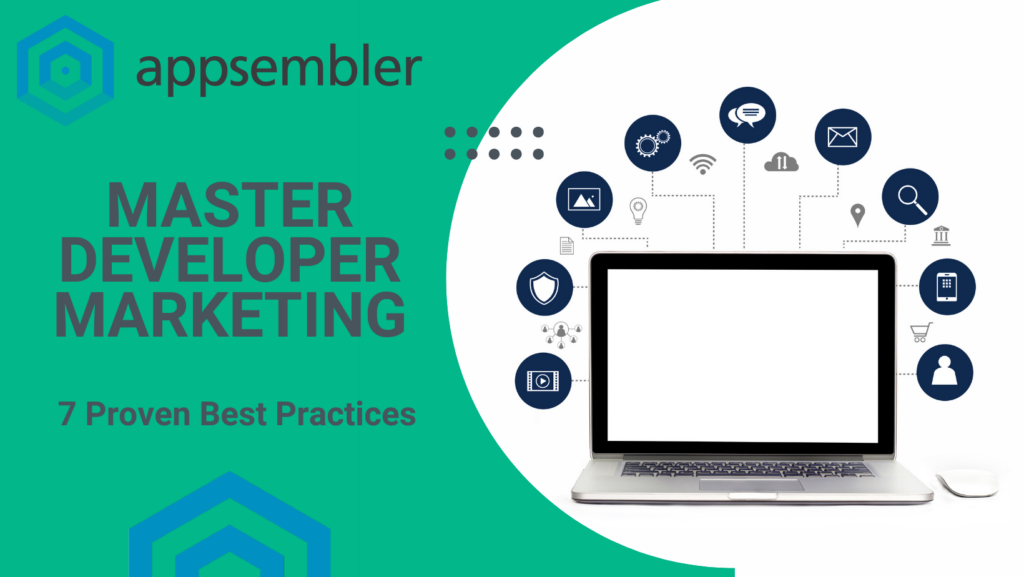In the fast-paced tech landscape, effective developer marketing has become paramount. This article delves deep into the best practices to engage and retain this unique audience. Discover how to leverage content, enhance developer experiences, and harness the power of community engagement to maximize your impact.
Key Takeaways
- Understanding and segmenting the developer audience is foundational.
- Value-driven content, such as tutorials and webinars, significantly boosts engagement.
- Developer Experience (DX) is pivotal and differs fundamentally from traditional UX.
- Engaging with developer communities can amplify reach and foster loyalty.
- SEO and website accessibility are non-negotiables for discoverability and inclusivity.
Table of Contents
- Introduction
- 1. Understand Your Developer Audience
- 2. Offer Genuine Value with Content
- 3. Prioritize Developer Experience (DX)
- 4. Leverage Community Engagement
- 5. Optimize for Search and Accessibility
- 6. Partner for Wider Reach and Credibility
- 7. How Appsembler Can Supercharge You Developer Marketing
- Conclusion
- Frequently Asked Questions
Introduction
In the tech-savvy universe, where developers are not just creators but influential consumers, developer marketing emerges as a pivotal strategy. We live in a realm where the right software, tool, or app can transform industries overnight. As such, reaching out to the creators of these solutions has never been more crucial. When done right, developer marketing is a win-win: developers discover tools that can aid their innovation while businesses tap into a niche yet influential audience. Couple this with the ever-evolving landscape of marketing strategies in the tech world, and it becomes paramount to keep abreast of the most effective practices to connect, convince, and convert this distinct audience.
1. Understand Your Developer Audience
Any marketing strategy’s bedrock is a deep understanding of its audience. For developer marketing, this means going beyond general demographics and diving into the technical nitty-gritty. Developers aren’t a monolithic group; they vary based on their expertise, platform preferences, languages, and more.
Segmenting the Developer Audience: Like any audience, developers can be segmented. Some may specialize in web development, while others might be experts in artificial intelligence or virtual reality. Then there are hobbyists, the full-timers, the open-source contributors, and the list goes on. Recognizing these subgroups allows for a more personalized marketing approach. Sending a machine learning tool advertisement to a front-end developer is akin to offering a fish a bicycle—it’s neither relevant nor effective.
Understanding Pain Points and Needs: To connect with developers, one must understand their challenges. Are they seeking more efficient debugging tools? Or perhaps they’re searching for resources on the latest coding language? By identifying and addressing these specific pain points in your marketing strategies, you can establish trust and credibility.
By honing in on your developer audience’s specific needs and preferences, you stand a better chance at crafting messages that resonate and, ultimately, achieving your marketing goals.
While developer marketing isn’t exactly a new concept, it’s becoming increasingly important as developers take increasing control over software purchasing decisions. Combine that with how traditional sales and marketing techniques don’t work well on developers, and what you get are organizations searching for a new approach.
2. Offer Genuine Value with Content
In the realm of developer marketing, content is more than just a tool—it’s the bridge that connects businesses with the developer community. While other industries can sometimes get away with flashy, surface-level content, when it comes to developers, substance is non-negotiable.
The Significance of Value-Driven Content: Developers operate in a world of logic, precision, and problem-solving. Hence, the content aimed at them should mirror these attributes. Value-driven content establishes a brand’s authority, fosters trust, and, most importantly, assists developers in their day-to-day challenges. Whether it’s a detailed guide on integrating a new API or a deep dive into a coding language’s nuances, the primary metric should always be: Does this add value to a developer’s life?
Types of Content: The beauty of content marketing is its versatility. There are numerous formats, each catering to different preferences and stages of the marketing funnel:
- Tutorials: These are in-depth, step-by-step guides, often filled with code snippets, aimed at teaching a specific skill or solving a particular problem. Developers particularly appreciate them as they provide hands-on, actionable knowledge.
- Webinars: Given the technical depth of many developer topics, webinars can be ideal. They allow for real-time demonstrations, interaction with experts, and deep dives into complex subjects, all while offering participants the convenience of remote attendance.
- Blog Posts: While they might seem traditional, they are still a powerhouse in the content arsenal. They share news, industry insights, or thought leadership pieces perfectly. With the right SEO optimization, they can drive organic traffic, boosting visibility and engagement.
Ensuring Quality Over Quantity: The digital age has seen an explosion of content, leading to a saturated landscape where quality often gets lost in the noise. For developer marketing, it’s essential to prioritize depth over breadth. Instead of churning out multiple pieces with little substance, focus on crafting fewer, well-researched, and high-value articles or tutorials. Remember, a single impactful piece can more profoundly affect your target audience than ten superficial ones.
In essence, content for developers should not merely inform but empower. By offering genuine value, brands can create lasting relationships with this influential community, driving loyalty and growth.

3. Prioritize Developer Experience (DX)
Much like User Experience (UX) focuses on optimizing the end-user’s interaction with a product, Developer Experience (DX) focuses on enhancing a developer’s interaction with tools, platforms, and APIs. In an era where developers have many choices, a stellar DX can be the distinguishing factor that nudges them toward one product over another.
Explanation of DX: At its core, DX is about simplicity and efficiency. It encompasses everything from the clarity of documentation to the intuitiveness of an API’s design. Imagine a developer trying to integrate an API: if the documentation is convoluted, if the error messages are unclear, or if the setup process is cumbersome, the developer’s enthusiasm and confidence in the product will wane. A polished DX ensures that developers can get up and running quickly, face fewer obstacles, and have a smoother path from ideation to implementation.
How It Influences Product Adoption: Developers, by nature, are problem solvers. They’re always searching for tools to streamline their processes and catalyze innovation. If a product offers a seamless DX, word spreads fast in the tight-knit developer community. Conversely, a poor DX can deter potential users and lead to attrition. In the competitive tech market, first impressions matter immensely. A product with a stellar DX not only accelerates initial adoption but also ensures longer-term retention as developers feel understood and catered to.
Tips for Optimizing the Developer Journey:
- Clear Documentation: Ensure your documentation is well-structured, concise, and regularly updated. Incorporate real-world examples and use cases to illustrate points.
- Intuitive Design: Whether it’s an API, a toolkit, or a platform, design it with the developer in mind. Minimize unnecessary complexities and ensure that the most common tasks are straightforward to execute.
- Responsive Support: Developers will inevitably run into roadblocks. Having a dedicated support channel, be it forums, chatbots, or helplines, can make all the difference in their journey.
- Feedback Loop: Actively seek feedback from your developer community. Their insights will guide you in refining and enhancing the DX continuously.
A superior Developer Experience not only solidifies a product’s position in the market but also fosters a community of loyal, enthusiastic developers who become its champions. Prioritizing DX is, thus, an investment in a product’s present and future.
4. Leverage Community Engagement
In the development world, community is not just a buzzword—it’s an ecosystem. Bound together by shared interests, expertise, and challenges, developers often turn to their community for guidance, support, and collaboration. Harnessing the power of community engagement is essential for any brand aiming to make a mark in the developer realm.
Importance of Community in the Developer World: The nature of coding and development is collaborative. Open-source projects, GitHub repositories, and collective problem-solving sessions on platforms like Stack Overflow attest to the communal spirit of developers. This collaborative ethos means developers often rely on their peers for recommendations, solutions, and insights. A product or tool that gets the community’s nod is more likely to gain traction and trustworthiness in the broader developer world.
Ways to Engage:
- Forums: These are the digital watering holes for developers. Sites like Stack Overflow, Reddit’s r/programming, or specialized forums for specific languages and tools, offer a space for discussion, troubleshooting, and knowledge exchange. Brands can engage here by offering solutions, sharing expertise, and building relationships.
- Social Media: While platforms like Twitter or LinkedIn might not be the first thing that comes to mind for developer engagement, they’re essential for brand visibility. Share updates, engage with industry influencers, and participate in relevant hashtag conversations to stay in the loop.
- Conferences: Events like Google I/O, Apple’s WWDC, or smaller niche conferences, provide a unique opportunity for face-to-face interaction. They’re platforms to unveil new products, gather feedback, and network with industry experts and potential users.
The Balance Between Promotion and Genuine Contribution: While community engagement offers a platform for brand visibility, it’s vital to tread carefully. Overly promotional tactics can backfire, leading to skepticism and distrust. Brands should aim for a genuine contribution. This means actively listening, addressing concerns, sharing expertise without expecting immediate returns, and valuing long-term relationship-building over short-term gains. Remember, developers prize authenticity and can discern between brands that truly care about the community and those only there for sales pitches.
In summation, genuine community engagement is a two-way street. By investing time and resources in fostering genuine relationships within the developer community, brands can build lasting trust, garner invaluable feedback, and amplify their reach in an organic, authentic manner.
5. Optimize for Search and Accessibility
In today’s digital era, merely having an online presence is insufficient. For brands targeting developers, it’s imperative that their content is discoverable through search engines and accessible, ensuring a frictionless experience for all potential users.
SEO Basics Tailored for Developer Marketing:
- Keyword Research: Dive deep into the terminologies and phrases developers frequently use. Tools like SEMrush or Google’s Keyword Planner can help identify high-value terms specific to developer tools, languages, or frameworks. Additionally, consider Google scraping for insights into the latest trends and user queries related to your niche.
- Technical SEO: Developers often scour forums, documentation, and tutorials for solutions. Ensuring your site’s architecture is crawlable and indexable by search engines is crucial. This involves creating a well-structured XML sitemap, optimizing crawl settings, and regularly monitoring for broken links or 404 errors.
- Content Optimization: Ensure your content, be it blog posts, tutorials, or documentation, is enriched with relevant keywords without sacrificing readability. Header tags, meta descriptions, and alt texts bolsters search rankings.
Importance of an Accessible Website and Documentation: Developers come from diverse backgrounds, and it’s vital to ensure your website is accessible to all, including those with disabilities. Accessible sites not only enhance user experience but can also positively impact search rankings. For developers, clear, organized, and accessible documentation can mean the difference between seamlessly using a tool or abandoning it altogether.
Best Tools and Techniques for Optimization:
- Lighthouse: An open-source tool by Google, Lighthouse analyzes web pages for performance, accessibility, and SEO. It’s an invaluable asset to get insights and recommendations for improvements.
- WAVE: A web accessibility evaluation tool, WAVE helps identify and rectify accessibility issues on web pages.
- Schema Markup: Especially for technical content, using schema can help search engines better understand and display content. For instance, marking up code snippets or FAQs can make them stand out in search results.
- Responsive Design: Developers might access your content from various devices. Ensuring a responsive design guarantees a consistent and user-friendly experience across all platforms.
In essence, the dual focus on search optimization and accessibility ensures not only that developer-centric content reaches its intended audience but also that the audience can interact with it seamlessly and efficiently.
6. Partner for Wider Reach and Credibility
In the vast expanse of the tech landscape, partnerships can serve as a beacon, illuminating opportunities, expanding horizons, and bolstering credibility. For those in developer marketing, forging strategic alliances can be a game-changer, amplifying reach and solidifying trust within the developer community.
Benefits of Partnerships in the Tech Industry:
- Expanded Audience Base: Joining forces with a complementary brand or platform can introduce your product or service to a whole new demographic of developers that you might not have accessed independently.
- Enhanced Credibility: Aligning with a recognized name in the industry can lend credibility to newer or lesser-known entities. Such endorsements or collaborations signal to the developer community that your product or service meets a certain standard of quality and relevance.
- Resource Sharing: Partnerships often entail sharing resources, be it technical expertise, marketing platforms, or even R&D capabilities. This can expedite innovation, streamline marketing campaigns, and augment the overall value proposition.
How to Choose the Right Partners:
- Alignment of Goals: Before entering a partnership, ensure both parties share common objectives. Whether it’s expanding into a new market, targeting a specific developer segment, or jointly developing a solution, having aligned goals is fundamental.
- Reputation Evaluation: Partnering with an entity that has a tarnished reputation can do more harm than good. Conduct due diligence, assess reviews, and seek feedback from trusted industry insiders before committing.
- Synergy Assessment: Evaluate how your products, services, or platforms complement each other. The best partnerships often arise from collaborations where each entity fills a gap for the other, creating a holistic solution for developers.
Collaboration Examples in Developer Marketing:
- SDK Integrations: Companies often partner to integrate their SDKs, allowing developers to harness the capabilities of both tools seamlessly. This not only enhances functionality but also widens the potential user base.
- Joint Webinars and Tutorials: Combining expertise to produce joint content can be a win-win. For instance, two companies might collaborate on a webinar, exploring how their combined tools can optimize a specific development process.
- Event Sponsorships: Brands frequently collaborate to sponsor or host developer-centric events, pooling resources, audiences, and expertise for greater impact.
In the ever-evolving tech industry, partnerships are more than just alliances; they’re synergistic relationships that, when crafted thoughtfully, can propel brands to new heights in developer marketing.
7. How Appsembler Can Supercharge You Developer Marketing
Appsembler is a powerful platform centered on delivering virtual IT labs and Learning Management Systems (LMS) solutions. Its unique value proposition lies in providing hands-on, immersive experiences for users, be they developers looking to test a product or learners delving into new tech stacks. With Appsembler, companies can facilitate real-world simulations, foster interactive learning, and, crucially for developer marketing, offer trial environments without the overheads of setting up physical IT labs.
Appsembler’s Tools and Features Beneficial for Developer Marketing:
- Virtual IT Labs: With these labs, developers can get a hands-on feel for a product or service, test out features, and experiment in a risk-free environment. It’s experiential marketing at its finest, offering tangible experiences that can sway decision-making.
- Customizable Learning Paths: Developer marketing isn’t just about showcasing a product; it’s also about education. Appsembler’s LMS allows companies to create tailored learning journeys, ensuring developers understand a product’s features, applications, and best practices.
- Scalability: Whether you’re hosting a webinar for a select group of developers or launching a massive open online course (MOOC) for a broader audience, Appsembler can handle it all. Its cloud-based infrastructure ensures smooth, lag-free experiences, irrespective of the scale.
- Analytics and Insights: Understanding engagement is key. With Appsembler’s robust analytics, companies can gauge developer interaction, identify popular features or modules, and refine their marketing strategies based on real data.
Appsembler isn’t just a tool—it’s a strategic ally for those serious about developer marketing. Its features empower companies to engage, educate, and enthrall the developer community like never before.
Conclusion
As we’ve explored, the foundational practices involve understanding your developer audience’s unique needs, offering value-laden content, prioritizing the developer experience, and harnessing the power of community engagement. Layered onto this, the imperatives of SEO and accessibility cannot be understated, ensuring that your content is discoverable and resonates with its intended audience. Strategic partnerships further amplify reach and credibility, while specialized tools like Appsembler elevate the entire developer engagement journey.
Yet, as with any aspect of the tech world, stasis is not an option. The key to enduring success in developer marketing lies in continuous learning, staying attuned to evolving trends, and being agile enough to pivot when required. Embrace these best practices, but remain ever-curious, ensuring your developer marketing strategies remain as dynamic and innovative as the developers you aim to engage.
Frequently Asked Questions
Developer Experience (DX) and User Experience (UX) both focus on delivering optimal interactions with products or platforms. However, while UX primarily concentrates on the end-user’s ease of use, aesthetics, and overall satisfaction, DX hones in on the experiences of developers. This encompasses the tools, APIs, documentation, and other resources that developers interact with. A good DX ensures that developers can easily understand, integrate, and work with a platform or tool, whereas UX emphasizes the smooth and intuitive nature of the end product for its user base.
Content marketing is paramount for developers because they rely on detailed, accurate, and up-to-date information to make informed decisions and execute tasks effectively. Through content, developers seek insights on new technologies, best practices, coding examples, and troubleshooting tips. Quality content not only positions a company as a thought leader but also builds trust within the developer community. Furthermore, developers appreciate platforms and brands that offer value-driven content, as it underscores a commitment to their growth and success, thus fostering loyalty and engagement.
Partnerships in developer marketing offer a myriad of advantages. Firstly, they extend a brand’s reach, introducing products or services to new audiences. Collaborating with established names in the industry can also lend credibility, signaling that a product or service meets high-quality standards. Moreover, partnerships can lead to resource sharing, from technical expertise to marketing platforms, expediting innovation and amplifying the overall value proposition. Strategic alliances often result in joint content creation, event sponsorships, or integrated tools and platforms, creating a richer, more holistic experience for developers.



